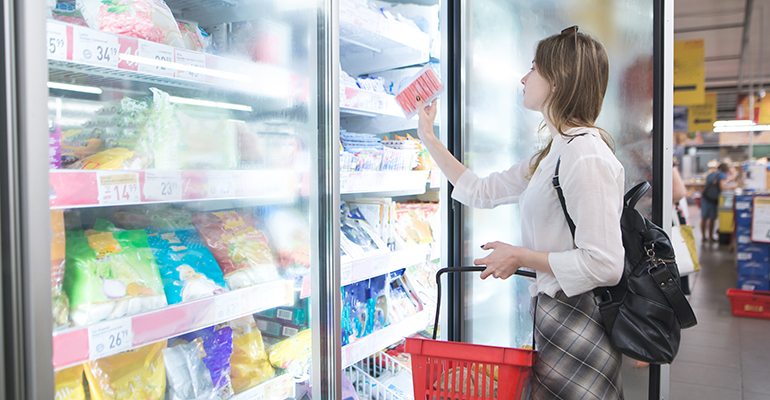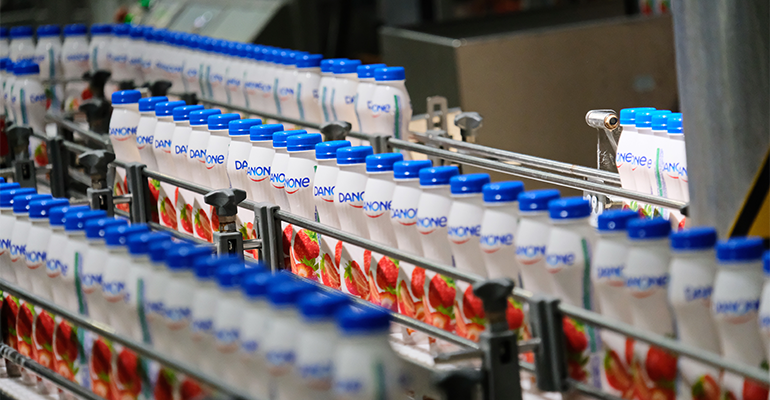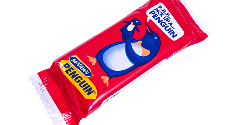News
Global consumers continue to purchase frozen food as segment thaws
23 Mar 2022
Across the globe, frozen food is increasingly growing its market share and beginning to make headway as a viable alternative for dinner when, for many years, it was viewed as a lesser alternative to fresh food.
From Asia to Europe to North America, the frozen food segment is continuing to grow even as the constraints imposed by the pandemic measures, which initially prompted consumers to take a second look at the frozen food segment, fade.

Frozen food has worked to shed its reputation of being a sub-par alternative to fresh food products in recent years, and, by and large, this effort has worked. In 2018, the frozen food segment experienced its first positive sales volume growth in five years, growing 1% for the 12 weeks ending March 10 of that year. Then the pandemic came and sales exploded thanks to homebound consumers looking for easy ways to feed themselves. Between November 2019 and November 2020, frozen food sales outpaced the sales for the food category as a whole, increasing 17.4%, according to data from IRI and the International Dairy Deli Bakery Association (IDDBA).
Frozen food sales continue to expand
While the expansion of the frozen food category has cooled off since then, experts are predicting that the segment will continue to expand globally.
According to The Frozen Food Report 2021 from the British Food Federation, the frozen food market in the country grew 4.6% to reach nearly £9 billion (€10.72 billion), adding £2.4 billion (€2.86 billion) in sales since 2005. In the Asia-Pacific region, the segment is expected to continue to grow at a compound annual growth rate of 9.12% through 2030 to reach a revenue of $145.22 billion (€131.61 billion). In the US, the frozen food market is projected to reach $90.47 billion (€81.99 billion) by 2028, growing from $62.39 billion (€56.54 billion) in 2020, according to Verified Market Research.
This continued interest in frozen food presents a significant shift in consumer attitude from only a few years ago. Frozen food is often seen as an economical choice for shoppers, but now, it is also seen as a solution to deliver healthy, convenient, easy-to-prepare meals at home. It also helps that frozen food has allied its image with the growing demand for sustainable options.
Frozen food may offer a solution to aid with the global food waste problem. In Britain, 6.6 million tonnes of food is thrown away annually, and frozen foods help reduce that tonnage, according to the British Food Federation. Similarly, a report from Deloitte found that 45% of US shoppers claimed more of their fresh food is going to waste, and that frozen food presents a viable alternative to store sustenance for longer — in the study, the firm found that 57% of 18 to 34-years-olds think frozen vegetables are just as good or better than fresh alternatives.
Not all regions are experiencing equal growth
According to the market research firm Fortune Business Insights, Europe will dominate the global share of the frozen food market, which is expected to reach $385.04 billion (€348.95 billion) in 2028 from $256.46 billion (€232.42 billion) in 2021. North America will retain its position holding the third-largest market share globally.
However, this growing segment is not without its challenges. In the Asia-Pacific region, limited cold chain infrastructure has imposed limitations on the ability of this segment to expand. However, in a report from Fortune Business Insights, the research firm noted that a rising number of cold chain solutions will continue to aid the expansion of this global growth market. Similar constraints exist in the Middle East, but there is a high potential for this market to attract support and continue to grow thanks to the governments' continued investment in shoring up the domestic food infrastructure.
Frozen food is set on a continued trajectory for growth. With younger generations favouring this category thanks to its ease of preparation as well as its alignment with sustainability values, this segment will likely continue to draw investment both from consumers as well as manufacturers.
Related news

Oat Barista: Innovation for game-changing beverages
20 Nov 2025
Oat Barista is a clean label, sustainable, and innovative drink base specifically designed to create the perfect foam in one single ingredient.
Read more
Nitrites: Pressure grows on UK to follow EU’s lead
20 Nov 2025
Pressure is growing on the UK to follow the EU’s lead after the bloc revised its regulations on the permitted levels of nitrites and nitrates in cured meats.
Read more
Empowering innovation in fortification and colouration
13 Nov 2025
Divi’s Nutraceuticals offers a large portfolio of innovative, high-quality ingredients for foods, beverages, and supplements, with bespoke solutions and expert support for product success.
Read more
Danone highlights digestive health as potential ‘tipping point’ for food industry
13 Nov 2025
Danone is betting on a food industry “tipping point” that will bloat the market for healthy products, particularly those related to gut health.
Read more
Standing Ovation and Bel scale up casein production from dairy co-products
11 Nov 2025
Foodtech company Standing Ovation has partnered with cheese specialist Bel Group to manufacture dairy serums for industrial-scale casein production via precision fermentation.
Read more
AI attraction means foodtech startups must ‘prove’ rather than ‘promise’
4 Nov 2025
Reports suggest that artificial intelligence (AI) is sucking investment from foodtech and agritech, but investors say the picture is complicated.
Read more
Will postbiotics become the go-to functional ingredient?
3 Nov 2025
Postbiotics show significant promise for the functional foods market due to their safety profile and beneficial bioactive properties, research suggests.
Read more
Meet the finalists of the Fi Europe Innovation Awards 2025
31 Oct 2025
Who made it to the shortlist of the Fi Europe Innovation Awards 2025? Read about the 23 companies making food and drink products healthier and manufacturing processes more efficient.
Read more
Penguin and Club bars no longer classed as chocolate
30 Oct 2025
Penguin and Club bars can no longer be classified as chocolate after the pladis-owned McVitie’s brands turned to cheaper alternatives amid the ongoing cocoa crisis.
Read more
Shorter drying time, sweeter success!
30 Oct 2025
Curious about cost-effective, sustainable and delicious candy making? Stefan Wessel reveals how Avebe’s solutions reduce drying time and energy use by up to 50%.
Read more